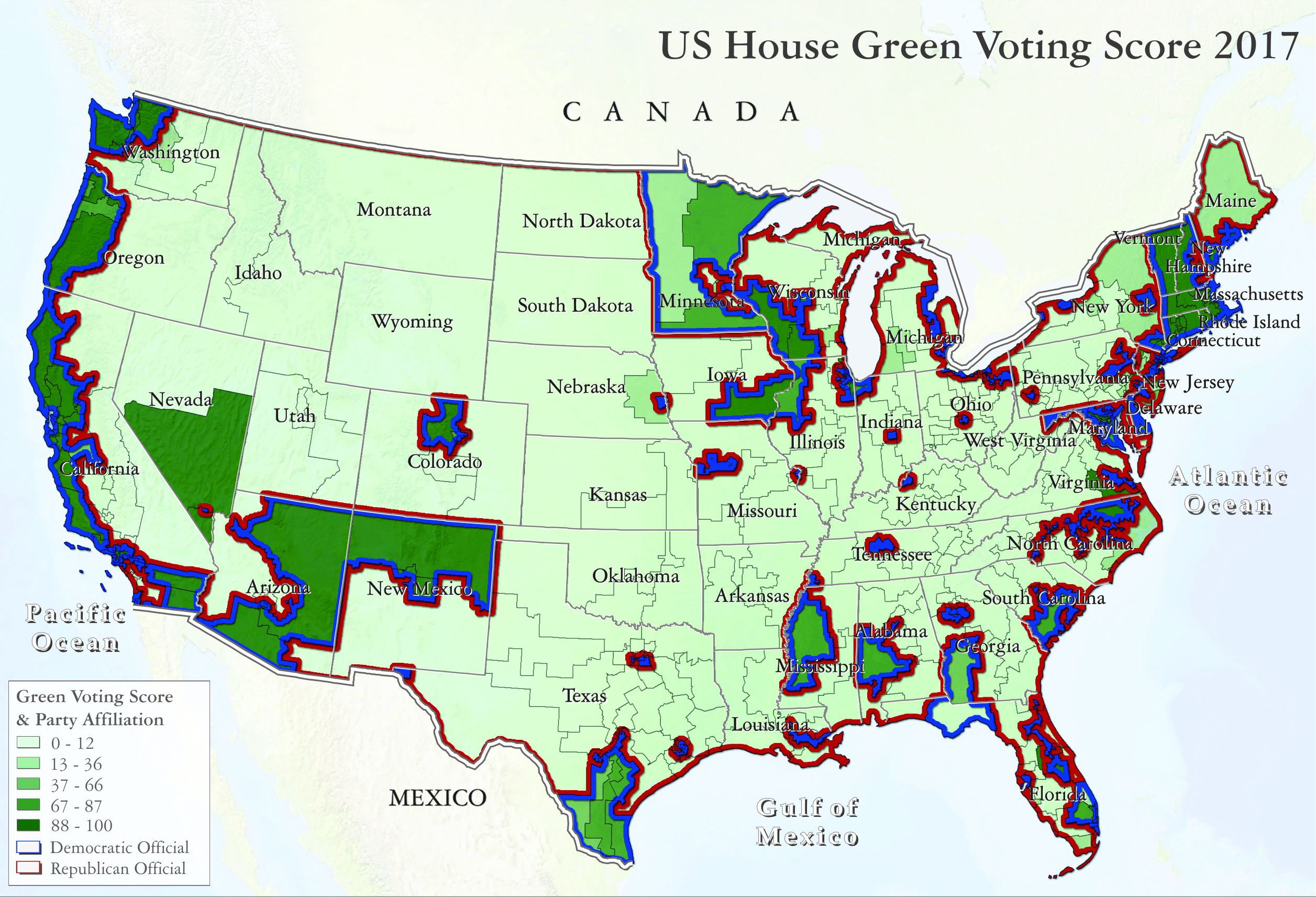
The natural landscape of Texas, and the entire country, is influenced by the political landscape in the Congress, although the agendas of politicians do not always closely track the opinions of the public.
The maps here reflect lifetime votes in the U.S. House through 2017, including the first session of the 115th Congress. The ratings draw on a review of representatives’ votes on a variety of conservation issues. The League of Conservation Voters bases their rankings on bills dealing with energy, climate change, public health, national lands, wildlife conservation, and spending on environmental programs.
The average rating for U.S. House members in 2015 was 44%, while the average rating House Representatives from Texas was sub-par, with their scores during the Session averaging just 26%. In fact, 20 of the 36 Representatives from Texas scored 0% on the 44 votes reviewed by the League of Conservation Voters during 2017. Fortunately, Joaquin Castro (D – San Antonio), Al Green (D – Houston), and Beto O’Rourke (D – El Paso) voted with the conservation position 100% of the time were leaders in voting in favor of U.S. conservation policy.
It is curious that most House members do not vote more strongly in favor of environmental measures, since polling indicates that 57% of the public believes that the U.S. government does too little to protect the environment, and 59% say that environmental regulations are worth the cost.
Sources:
Gallup. 2016. Environment. http://www.gallup.com/poll/1615/environment.aspx (Accessed 17 December 2016).
League of Conservation Voters. 2018. National Environmental Scorecard: 2017 Scorecard Votes. http://scorecard.lcv.org/exports/2017-senate-scorecard-grid-export.csv (Accessed 26 November 2018).
Pew. 2016. Election 2016: Most Americans favor stricter environmental laws and regulations [poll conducted Nov. 30 – Dec. 5, 2016]. http://www.pewresearch.org/fact-tank/2016/12/14/most-americans-favor-stricter-environmental-laws-and-regulations/ (Accessed 17 December 2016).
